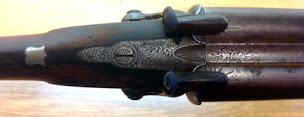 |
| Laxton in the snow |
The news is depressing, the weather is murky and the days are short so it is definitely time to turn to local history.
I love looking at the old newspaper site to which I subscribe and usually distract myself with reading all sorts of snippets. Sometimes it is something which has been mentioned on a facebook page like the fascinating story of the de Cobain family who came to Goole from Northern Ireland. One branch of the family lived in a house called Armaghbreague on Hook Road and a search on that name and Goole soon brought up lots of articles.
But today I thought I would look at what was happening in the local area at this time of year. What was affecting people then? So below is a random collection of events from Christmases past. I was particularly interested in the reference to a Christmas tree in Howden, obviously then something unusual.
I hope that next year we will all be too busy celebrating with our friends to have time to sit in front of the computer!!!
1859
HOWDEN. Christmas Treat. —On Christmas Day the inmates of the Howden Union Workhouse were regaled with the good old English cheer of roast beef and plum pudding to their hearts’ content, being allowed to eat much they liked. The provisions were of the first order, and were served up in style highly creditable by Mr. and Mrs. Meadley, the esteemed master and mistress of the house.
1869
HOWDEN Christmas Tree,—On Wednesday a Christmas tree was exhibited, and a sale of useful and fancy articles held the Town-hall, Howden. The proceeds will be devoted to defraying the expenses of general cleaning of Howden church. The committee of ladies who originated the bazaar have worked in the most indefatigable manner to ensure the success of their undertaking and the results have exceeded the expectations of the most sanguine promoters. In spite of the inclement weather the Town-hall was crowded during the whole of the afternoon and evening, and the day's receipts amounted about £1OO, great many articles still remaining unsold, the room was opened again on Thursday, when most of them would doubtless be disposed of
1900
HOWDEN. Christmas Day. —The church bells commenced to ring about 6.30 a.m., and rang merry peals during the day. Postmen's Breakfast.—The postmen of the Howden District had their annual breakfast on Tuesday at Mr F. Powls’ house. There were about twelve present
[Nb Tuesday was Christmas Day]
1912
CHRISTMAS AT GOOLE WORKHOUSE. Forty large Christmas plum puddings were disposed of on Christmas Day, in addition to roast beef and other special fare by the inmates of the Workhouse and Infirmary, who numbered 184. Dinner was served 12.30 in the dining hall, which had been specially decorated by the master and matron (Mr and Mrs J. Carpenter), the assistant matron (Miss Moore) and the cook (Mrs Walton), and which presented most attractive appearance
After dinner, tobacco and other luxuries were distributed, and at 2p.m. a 'free and easy" was held, recitations, etc. being given, and dancing indulged in. John Barnes was the M.C. On Christmas Eve, Mrs Creyke, of Rawcliffe Hall, distributed sixpence each to the adult male inmates, tea and sugar to the women, and toys to the children in the house. She also gave buns to the Infirmary patients.
Dec 20th 1921
The high tide on Saturday evening overflowed the banks at Blacktoft flooded the houses, and some cases put out the fires.
December 1921
Through the efforts of the Goole Shipyard Employees Benevolent Fund Committee 1,050 children the bulk of whom belonged to families of unemployed shipyard workers were entertained on Thursday to a substantial Christmas meal which took place in the canteen of the Goole Shipyard and Repairing company who the generously contributed £300 to the committee funds. The committee also distributed £50 of groceries and 2,300lbs of beef to unemployed workers.
December 1941
The golden wedding anniversary was celebrated yesterday of and Mrs Benjamin Dale of Woodland-Avenue. Goole. Mr Dale is a native of Kilpin, near Howden, but has spent most of his life in Goole, where as a youth he was apprenticed to the late Mr Joseph Glew, furnisher and undertaker. The business was later taken over by Messrs Eastham, Ltd., and he remained with the firm until he retired five years ago. Mr Dale is an old Volunteer, his eldest son served the last war, and youngest is present in the Army. Both Mr Dale and his wife, who was born at Sandtoft, are 71 years of age. They have a family of six, and eight grandchildren.
December 1941
Repulse Survivor News has been received by his wife that Leading Seaman Douglas H. Shaw, of Broadway, Goole was one of the survivors from H.M.S. Repulse. Seaman Shaw, who is 25 years of age, is a native of Asselby. Howden, and has been in the Navy since he was a boy. He joined the Repulse shortly before the war. He was on leave during the summer.
December 1945
Told he would be reported for riding a pedal cycle without a light, Albert Tipping, a Howden farm labourer, said: If I had had a better bike you would not have caught me." Tipping was fined 7s 6d
December 1946
CHRISTMAS FESTIVITIES AT GOOLE with many of the town's former servicemen back home for their first Christmas for some years, Goole families did not allow austerity to stand in the way of merrymaking. The weather was fine, though cold, and the main outdoor attraction was the Yorkshire League match on Boxing Day between Goole Town and Huddersfield Town, which drew a crowd of 3,000, including 200 German prisoners of war.


































